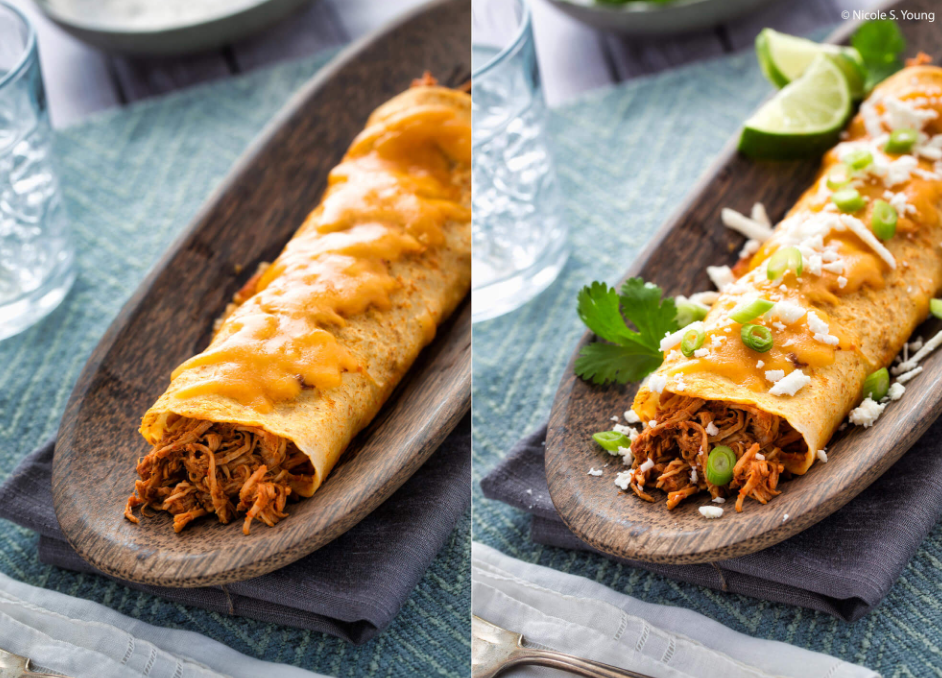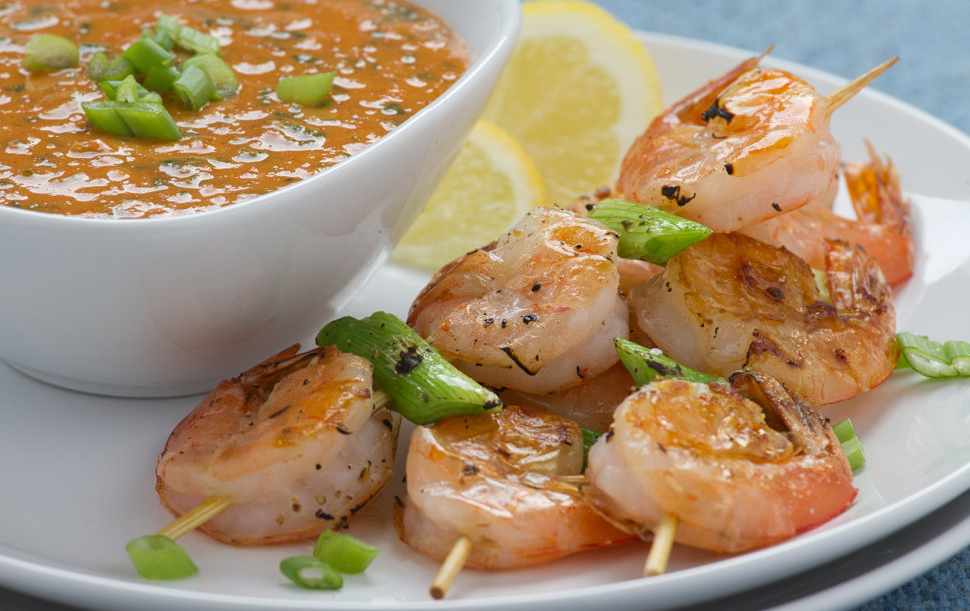All of us love to look at pictures of delicious food. One of my favorite compliments about food photography is that it makes people hungry. It is not possible to capture the taste and smell of food with photography. However, the two-dimensional image can be so appealing that it triggers the imagination. One of the primary goals of food photographing is to make an image as delicious as the food that it represents. Check out these five tips if you are just getting started with food photography or would like to refresh your memory.
Nicole Young created all images and edited them using LuminarAI.
Photographing Food for Delicious Images
Aim to Eat Freshly Prepared Meals
Colour It Up
Add Movement
You can use small dishes
You can give your food photos a new life in post-processing

Use Freshly Prepared Food as Your First Tip. Using freshly prepared food
Photographing food when it is still fresh may seem obvious, but this will make the photos more appealing. It is important to plate and photograph cooked food immediately as it will lose its appeal within 5-10 minutes. The timing can vary according to the type and amount of ingredients used, but you should keep in mind it will not look as good for long even if it still tastes good. Be sure to work fast and capture your photos before the food on set “dies”.
Create a substitute object to make sure you are ready to serve your dish. It’s one of the tips I use for each and every food photo that I take. Stand-ins are objects that look similar to the food you will be photographing. They can also be placed on set in a dish that matches your own.
It can sometimes be as simple as crumpled up paper or food samples that you will be using for your main image. You can create your entire tabletop setting without having to wait for a dish that’s been freshly prepared. Food photography tips also apply to raw foods. You’ll want to ensure that the food you are photographing has not been left out for too long, even if it doesn’t require cooking. Food that is not cooked will stay fresher on the set for longer, but will eventually start looking sad. To make fresh fruit and vegetables appear fresh, I spray them lightly with water to create small droplets. It makes them appear clean and fresh for photos.

Make it Colorful. Tip #3.
It’s a fact: some food does not look very appetizing by itself. If you use a lot browns or oranges, your food can look bland and boring. When I take photos of food which might be lacking in appeal, I add colorful garnishes to bring it to life. It only takes a few green vegetables or herbs to enhance the appearance of food photographs.
The above picture shows a beautifully wrapped enchilada. However, the oranges and browns looked very similar and did not look new. This dish needed some garnishing to look more appealing. The blue tablecloth contrasts nicely with the food, but the green onions and Cotija cheese on top of the enchilada are a lovely color. The enchilada was improved by adding green onions, Cotija and cilantro to the top.
The pulled pork sandwich is bland and brown. You’ll know the taste is not boring if you have ever tried one (or a tasty and tangy barbecue sauce). The colors of this picture could be improved. To give the picture a colorful and vibrant appeal, I added freshly-made coleslaw on top of the sandwich.
Shrimp can be colorful and tasty on their own. If there is nothing to counteract the pinks and whites, then it can look like a sea when it’s photographed. To balance out the color pink in this image, I added green elements by adding green onions to the sauce as well as between the shrimp.

Add Movement to Your Food Photographs. Add Movement
Food photography is usually considered a still-life image, but I enjoy bringing my images to life with movement. You can do this with hands, utensils or the actual cooking process. You probably didn’t think action photos would be included on a list about food photography.
This setup allowed me to create a series of still-life photos featuring a cheese platter with honey and jam. Then I could have fun playing with food. In order to add a sense of movement and life, I used a honey dipper on a cheese plate. This implied that a person was doing it off camera.
For this picture, however, I used photographic equipment known as a magic hand and positioned the arm so that it was perfectly composed for this set-up. For movement, I lifted the small honey jar to cover the honey dipper and then took multiple photos of different drip stages.
A perfectly poached yolk is one of my favorite culinary delights. The first image is good but definitely lacks something. Once I knew I had the perfect composition, lighting and setup I cut a tiny slit into the yolk of the egg to allow it to run and drip down onto the plate. The photo looks deliciously messy.
You can also add motion to your photos by using the ingredients involved in cooking. The wood in the background is causing smoke around the asparagus pile that is being cooked on the grill. The smoke was filling up the area, so I used the surrounding atmosphere to photograph the food.

Use Small Dishes Tip #4: Use small dishes
When photographing any dish or plate of food, I like to choose a smaller one than what I’d use in reality. If you are not using a plate that is large enough to hold the food (for example, a white chef’s plate), then there shouldn’t be much extra space in your photo. It helps to fill out the scene, and makes the food appear large and gorgeous.
The items that I photographed in the image above were small. The plate was too big, and I didn’t like the excess plates surrounding it. I only wanted a small number of items. To zoom into the food, I chose a smaller plate.
You may want to present a dish that is standard size, but make it appear large and appealing. In this case, I chose a small bowl to display a Thai-style noodle recipe. The greens, and any other garnishes will look delicious and large.
The Scene
Setting up your scene with care is a good idea.
The first method of setting up a table is to place it on the floor.
You can do this by pretending to eat. In this case, I add to the background elements that are logical, like a drink, utensils and napkins. Sometimes, I place full plates of foods in the background as a way to simulate a dining table with multiple diners.
You want to avoid adding any uncooked food, like uncut peppers or garlic heads. The background dishes add to the realistic feel of the setup, and make the picture more appealing.
In the image above, I chose a tablecloth in a pale blue to bring out the color of the blueberries. In the background, I added an orange glass and a bowl of blueberries. This adds realism to the table. For the final touch, I placed a fork on the table, suggesting that one could sit and enjoy a meal.
The image is colorful and bright, but the fork was not forgotten! In the background, I added another bowl of fruit. The out-of-focus image adds dimension.

Setting up Method 2: Perfect ingredients for still life
Use hyper-realistic backgrounds that compliment food preparation or create a beautiful scene for still life photography.
If you are unsure which boards to try, I recommend V-Flat World’s Duo Boards. V-Flat World Duo Boards are a great option if you don’t know which board to choose. The boards are available in either 24”x24″ or 30’’x40″. They feature a variety of textures, including wood grain, marble, cement, and subway tiles. These boards are also easy to maintain and highly durable.
Surface boards are highly adaptable due to their portability and texture choices. They can be used for many different genres. They are also great for weddings, product photography and newborn photography. Find out more about how to utilize these medium to small-sized backdrops.
Food Photography Tip #4. After-processing: Give your food photos life

Editing is the final step to creating an aesthetically pleasing and delicious food photo. With LuminarAI you can enhance the colors (and fix them if necessary with the Color Cast Removal Slider), improve details with StructureAI and then add a final touch using Mystical, one of my favourite tools. LuminarAI is a powerful tool that can be used to enhance food photos.
This collection of tips on food photography will help you create tasty images. Preparation and planning are key to improving your food photography for personal or professional use. Visit Skylum and get your copy of LuminarAI to practice your food photography. Get $10 off your purchase to make sure that you photos are as beautiful as the food you’re photographing. You can use the discount code PHOTOARGUS.